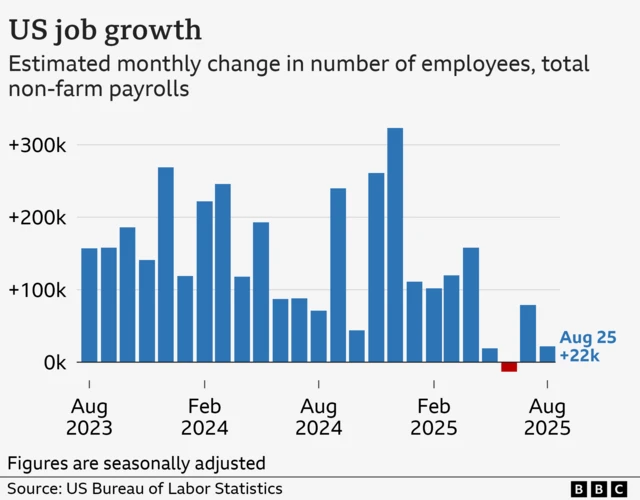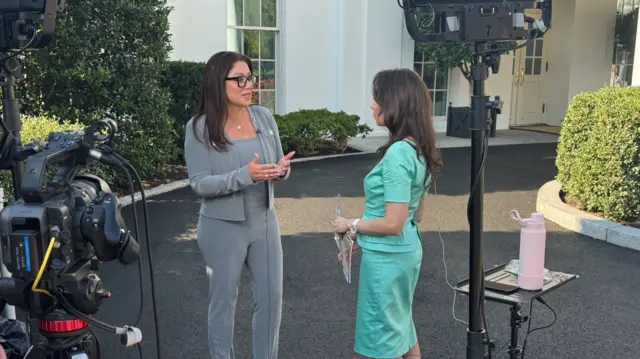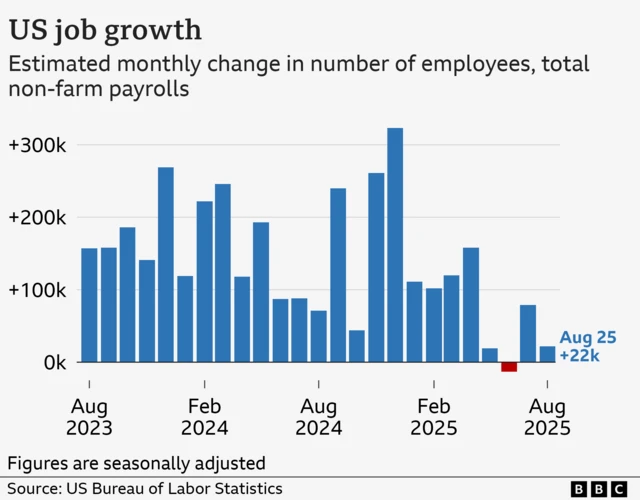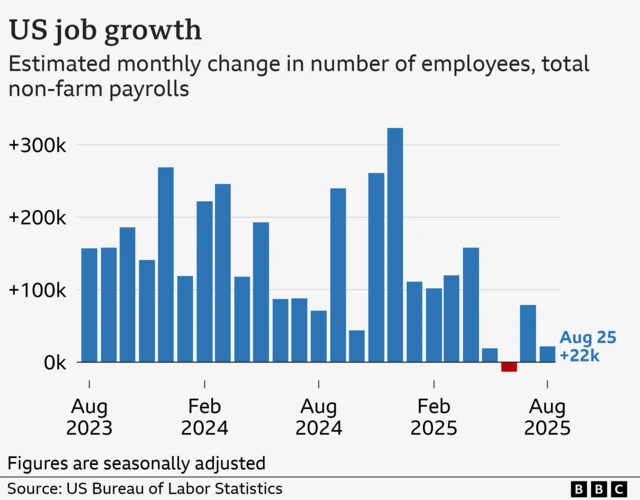US jobs market weakens further in Augustpublished at 16:01 BST 5 September
The US jobs market weakened further in August, raising new fears about the health of the world's largest economy.
In August, the US added just 22,000 jobs with the unemployment standing at 4.3%, the highest in nearly four years. It is the first report since President Trump fired the former head of the Bureau of Labour Statistics, the agency that compiles the report.
The weak figures will likely pave the way for the US Federal Reserve to cut interest rates later this month.
Job losses, including in the manufacturing sector, have raised alarms for some analysts as they watch how Trump's tariff policies, and stricter enforcement of immigration rules, impact the economy.
We are now ending our live coverage, but you can read more about the jobs report here.











